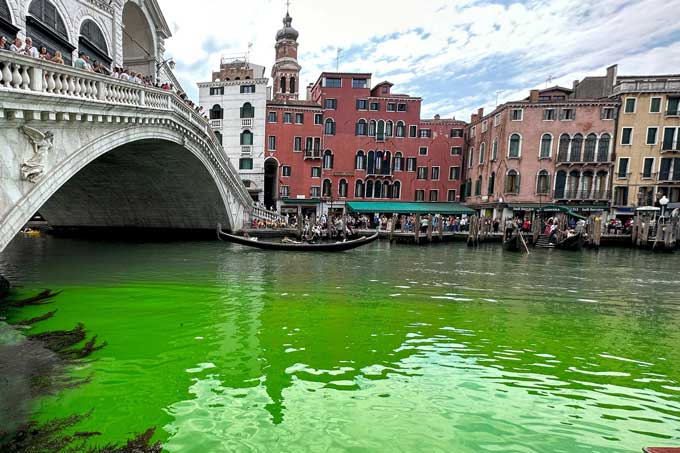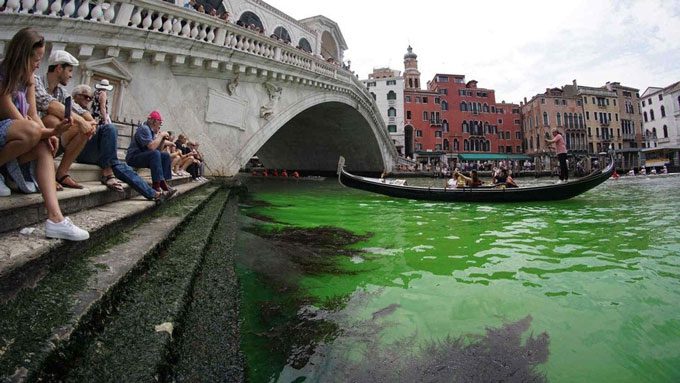The water surface at the main canal near the Rialto Bridge in Venice turned green on May 28, prompting local authorities to investigate the cause.

The water at the Grand Canal near the Rialto Bridge in Venice turned green on May 28. (Photo: AP).
On May 29, local authorities concluded that the surface water in a section of the Grand Canal turned fluorescent green due to fluorescein—a non-toxic substance used to test sewage systems.
“Analysis shows the presence of fluorescein in the water samples collected,” announced the Regional Agency for Environmental Prevention and Protection of Veneto (Arpav). Arpav stated that the results “did not indicate the presence of any harmful elements in the analyzed samples.”
On the morning of May 28, residents and many tourists were surprised to see the water surface of the Grand Canal near the Rialto Bridge turning green. The Venice city government subsequently convened a meeting with police and environmental forces to determine the cause and implement response measures.
According to the local newspaper La Nuova Venezia, the color change of the water was initially considered by the police to be a protest by climate activists. Recently, this group has been known for actions such as using colored wax to paint statues and artworks.

Many residents and tourists sit by the canal watching the color-changing phenomenon. (Photo: Meteo it).
This is not the first time the Grand Canal has turned green. In 1968, Argentine artist Nicolás García Uriburu dyed the water in the Grand Canal with fluorescent dye during the 34th Venice Biennale to raise ecological awareness.
The color change of the canal’s water occurred while Venice was hosting the Vogalonga event, aimed at raising awareness about the impact of motorboat waves on the city’s structures.


















































